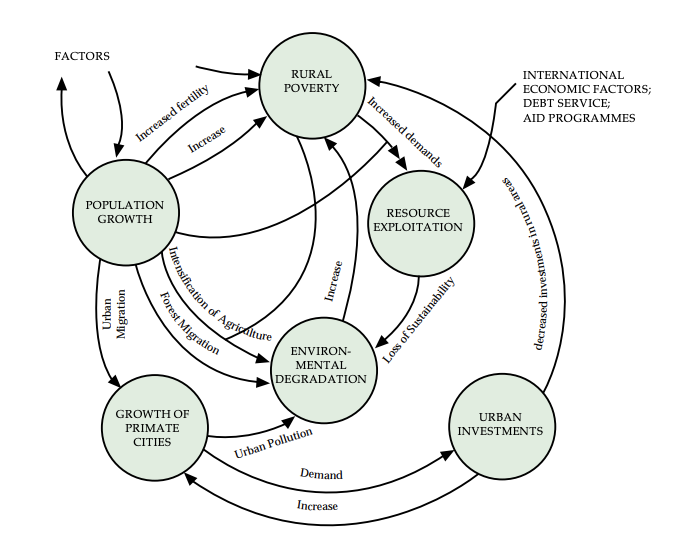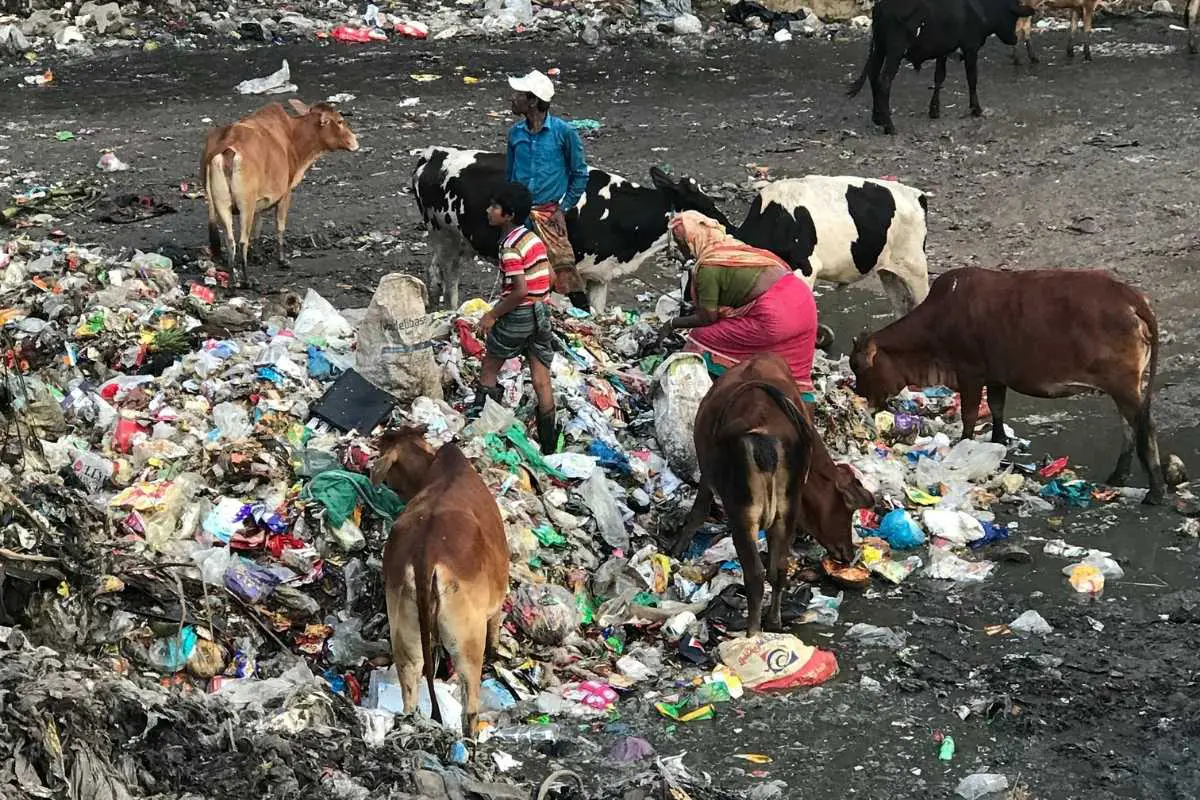Continuing in the “Poverty And Problems” series, the topic of this blog post will talk about the problems that any country in the world is currently facing: environmental issues and global warming. Perhaps many people wonder what poverty has to do with environmental pollution and the abuse of natural resources. This article will answer this problem.
Everyone must realize the link between poverty and environmental challenges. People’s poverty strains the environment, while environmental issues cause the poor to suffer greatly. Whether wealthy or impoverished, people consume water, food, and natural resources to stay alive. Natural resources underpin all economic activity, whether directly, indirectly, or indirectly, and any demand for natural resources can result in environmental stress.
Table of Contents
Environmental Pollution and Poverty Explored
Environmental deterioration can make it difficult for individuals, particularly the impoverished, to live in safe and sanitary conditions. Because impoverished people rely more directly on the environment for their survival than the wealthy, they are disproportionately affected by environmental issues.
Poverty often leads to people putting more pressure on the environment, resulting in larger families (due to high death rates and insecurity), improper human waste disposal, unhealthy living conditions, and more pressure on fragile land to meet their needs, as well as overexploitation of natural resources and deforestation. Inadequate understanding of agricultural procedures can also decrease crop output and productivity, among other things.
“When you look at societal choices, people make poor choices for good reason. Poverty drives pollution and pollution drives poverty.”
Professor Robert Shorten
Poverty also contributes to environmental damage through air pollution. As previously said, underprivileged populations lack the necessary expertise in producing practices. As a result, how people use resources to help themselves live is destructive to the resources around them and the planet.
Air pollution is a primary effect of inadequate industrial processes, whereas water pollution results from poor water management, which is caused by a lack of information. Water contamination has far-reaching consequences that extend beyond the disadvantaged neighborhood. Water pollution depletes the soil of essential nutrients, kills fish, and is hazardous to human health.
Many impoverished women lack the resources to utilize birth control because extreme poverty does not often allow for extensive birth education. As a result of their limited access to resources and knowledge, impoverished women are more likely to have children later than they would prefer.
As the world’s population rises, greater emphasis is focused on the environment. Every human person consumes a portion of the environment’s resources, and with so many births coming from impoverished regions, the environmental costs are becoming increasingly burdensome.

In fact, poverty seriously affects the environment, but the environment also exacerbates poverty. Poverty and pollution are inextricably intertwined. Pollution-related mortality accounts for over 92 percent of deaths in low- and middle-income nations. Because modest exposures to pollutants in prenatal and early childhood can result in permanent sickness, disability, premature death, and diminished learning and earning capacity, children are the most susceptible victims of pollution. Because of a lack of data collecting and scientific study on many contaminants, the health effect of pollution is likely to be far bigger than can be adequately assessed today.
The poor are greatly affected by environmental pollution. Direct medical expenditures, costs to healthcare systems, and opportunity costs resulting from missed productivity and economic growth are all costs associated with pollution-related diseases. Pollution-related welfare losses are projected to be $4.6 trillion per year or 6.2 percent of world economic output.
Environmental pollution, in particular, may have substantial effects on children, especially impoverished children, because where a person lives has a significant impact on how they develop and who they become. Climate, housing alternatives, land availability, water supply, disease-carrying insects, waterborne infections, local infrastructure, healthcare access, and other factors influence a child’s quality of life and living level.
The environment in which a kid grows can worsen physical health issues and impact their mental health. When violence erupts or a natural disaster strikes, overcrowded metropolitan areas with many impoverished people living in slums increase the danger of disease transmission, especially during a pandemic or health emergency, and they also raise the death toll.
Poverty and Environmental Pollution have a close relationship; therefore, the presence of one of the above two factors will affect and aggravate the condition of the other factor. Therefore, to contribute to solving either or both of the above problems, the governments of the countries should try to come up with policies or campaigns to call and educate people to protect the environment and hunger eradication and poverty alleviation, especially in remote and underdeveloped areas. The government needs to educate people to be aware of the relationship between poverty and environmental issues to improve their quality of life.
At Project Sprouts, we realize that we can not solve all the problems of poverty in a situation like this. But we can seek to make a difference in the lives of needy children by giving them school supplies and encouraging them to continue their education; we can give them winter coats, boots, and blankets to help them stay warm during the cold winter months.
Project Sprouts would love to have you be a part of our community and help us help worthy children in North Vietnam. We cannot solve all the world’s problems, but we can do our part to help poor kids grow by giving school supplies, winter coats, boots, and other supplies.
You can find out more about Project Sprouts by clicking here or going to our give now page to donate by clicking here. As we are a grassroots organization, all funds help those in need.
Frequently Asked Questions
1. What is the connection between poverty and environmental pollution?
Poverty and environmental pollution are interconnected because impoverished communities often lack access to clean resources and are more likely to engage in activities that harm the environment due to their economic constraints. Similarly, environmental degradation exacerbates poverty by reducing access to vital resources.
2. How does poverty contribute to environmental degradation?
Poverty can lead to unsustainable practices such as deforestation, overfishing, and reliance on polluting energy sources, as individuals and communities struggle to meet their basic needs without regard for long-term environmental consequences.
3. What are the environmental impacts of poverty-driven activities?
Poverty-driven activities can lead to deforestation, soil erosion, air and water pollution, habitat destruction, and the depletion of natural resources, all of which contribute to environmental pollution and degradation.
4. How does environmental pollution affect impoverished communities?
Impoverished communities are disproportionately affected by environmental pollution as they often live in areas with poor air quality, lack access to clean water, and are more vulnerable to the health effects of pollution due to limited healthcare resources.
5. Can addressing poverty help mitigate environmental pollution?
Yes, alleviating poverty can contribute to environmental conservation by empowering communities to adopt sustainable practices, invest in clean technologies, and reduce their environmental footprint.
6. What role do policies and regulations play in tackling poverty-related environmental issues?
Effective policies and regulations can promote sustainable development, protect natural resources, and ensure that industries do not exploit impoverished communities or harm the environment in pursuit of profit.
7. Are there success stories of poverty alleviation and environmental protection initiatives?
Yes, numerous initiatives worldwide have successfully combined poverty alleviation with environmental protection. Examples include microfinance programs supporting eco-friendly businesses and reforestation projects that provide income to impoverished communities.
8. How can individuals contribute to addressing the link between poverty and environmental pollution?
Individuals can make a difference by supporting sustainable products, reducing waste, conserving energy, and advocating for policies that address both poverty and environmental concerns.
9. What are the long-term consequences of ignoring the poverty-environment link?
Ignoring this link can lead to worsening environmental degradation, increased poverty, social instability, and a reduced quality of life for future generations.
10. How can global cooperation help tackle poverty and environmental pollution simultaneously?
Global cooperation is crucial for addressing these interconnected issues by sharing knowledge, technology, and resources, and by collectively committing to sustainable development goals that benefit both people and the planet.
Related Content
Poverty And Problems: Family
In my second article on Poverty and Problems, I will write about a topic that is perhaps quite surprising to many people: Family. Many of us have seen articles or news programs reporting on broken marriages of politicians, wealthy billionaires, or celebrities in newspapers or on television. Many people mistakenly think that it will be easier to divorce when we are rich.
You can learn more by reading Poverty And Problems: Family by clicking here.
Poverty And Problems: Migration And Immigration
As I have introduced in previous blog posts, poverty is the root cause of many social problems and ills. I want to post a series of blog posts about poverty and its effects on people and society. And in the first blog post, one of the topics receiving great attention from everyone is migration and immigration.
You can learn more by reading Poverty And Problems: Migration And Immigration by clicking here.


